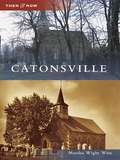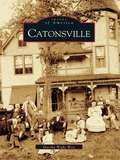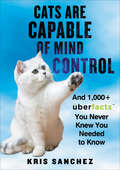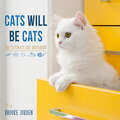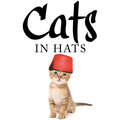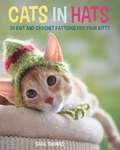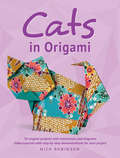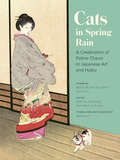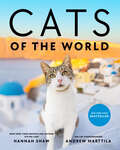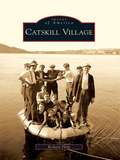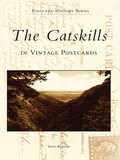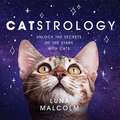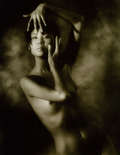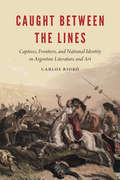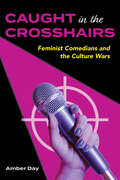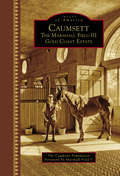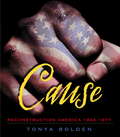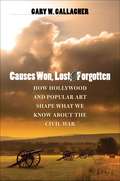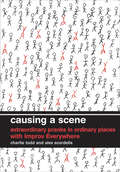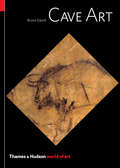- Table View
- List View
Catonsville
by Marsha Wight WiseCatonsville, a major suburb of Baltimore, retains much of its early 19th-century, genteel country-estate charm. In 1810, Charles Carroll bestowed the land that is now Catonsville upon his daughter, Mary, and her husband, Richard Caton. The Frederick Turnpike helped the area grow, and many estates and farms cultivated the community. By 1880, it was the preferred summer retreat from the heat of Baltimore City for some of Maryland's most prosperous merchants. The completion of the Catonsville Short Line Railroad in 1884 made the burg attractive to middle-income families; a diverse village was born. Highlighted in this volume are many long-gone homes, mansions, and institutions such as Castle Thunder, Ingleside, Nancy's Fancy, Catonsville Casino, Farmlands, and Arden, the centerpiece of Eden Terrace. Featured as well are monuments that still stand today: Uplands Mansion, Homewood, James Gary's Summit, Hilton, St. Mark Catholic Church, St. Charles College, Old Salem Lutheran Church, Mt. de Sales Academy, Belle Grove, numerous Victorian manors, and the early 20th-century homes that completed this hamlet.
Catonsville (Images of America)
by Marsha Wight WiseCatonsville, a major suburb of Baltimore, retains much of its early 19th-century, genteel country-estate charm. In 1810, Charles Carroll bestowed the land that is now Catonsville upon his daughter, Mary, and her husband, Richard Caton. The Frederick Turnpike helped the area grow, and many estates and farms cultivated the community. By 1880, it was the preferred summer retreat from the heat of Baltimore City for some of Maryland�s most prosperous merchants. The completion of the Catonsville Short Line Railroad in 1884 made the burg attractive to middle-income families; a diverse village was born. Highlighted in this volume are many long-gone homes, mansions, and institutions such as Castle Thunder, Ingleside, Nancy�s Fancy, Catonsville Casino, Farmlands, and Arden, the centerpiece of Eden Terrace. Featured as well are monuments that still stand today: Uplands Mansion, Homewood, James Gary�s Summit, Hilton, St. Mark Catholic Church, St. Charles College, Old Salem Lutheran Church, Mt. de Sales Academy, Belle Grove, numerous Victorian manors, and the early 20th-century homes that completed this hamlet.
Cats Are Capable of Mind Control: And 1,000+ UberFacts You Never Knew You Needed to Know
by Kris SanchezFrom the creator of the popular Twitter sensation UberFacts comes this fun compilation quiz book, packed with entertaining infographics and surprising factoids, for fans of Schott’s Miscellany, What If? and Ripley’s Believe It or Not.Providing "the most unimportant things you’ll never need to know”—fun and surprising facts, statistics, and infographics on diverse subjects, from art and science to history and popular culture—UberFacts has become one of the most widely followed and successful accounts on Twitter, followed by nearly 12 million people.Based on the popular social media phenomenon and culled from an exhaustive variety of sources—science journals, books, media, and literary magazines—Cats are Capable of Mind Control is a fascinating collection of shocking, delightful, educational, and informative facts and figures that are entertaining, topical, and sometimes downright bizarre (the safest place to suffer sudden cardiac arrest in the U.S. is a casino).Did you know:The Pentagon was constructed so that no point in the building is more than a ten-minute walk from any other point?Vultures’ stomach acid is so corrosive they can digest anthrax?Farmers in India use Coca-Cola and Pepsi as cheap and effective pesticides?Discover all this and much, much more in this treasure trove of trivia for the social media age.
Cats Will Be Cats: The Ultimate Cat Quotebook
by Brooke JordenWith quotes from cat-lovers and cat-toleraters alike, Cats Will Be Cats is a new kind of quote book about what these feline friends and fiends bring to our lives.
Cats in Hats
by Kat ScratchingJazz cats in fedoras, feisty cats in Viking horns, gourmand cats in chef’s hats, Burmese cats in bonnets, and the always popular Siamese in a sombrero—no one rocks a hat quite like a cat.Featuring more than forty two-page spreads consisting of color photos alongside hilarious captions and informative text, Cats in Hats is a fun, joyful compendium of some exquisite combinations of felines and head wear. They say cats have nine lives, but no one’s ever told us how many hats they have...
Cats in Hats: 30 Knit and Crochet Hat Patterns for Your Kitty
by Sara ThomasDeck your cats out in hats that suit their many personalities! With The Punk Mohawk for edgier cats, The Unicorn for cats who are having identity issues, and The Cat in the Hat for any cat that loves great literature, there is a pattern in this book for every feline friend in your home. Complete with a breakdown of skill level and method of working (knit or crochet), suggestions for yarns, and written patterns and charts where necessary, you'll be able to whip up amazing headwear, whatever your cat's character. With the adorable color photos and helpful illustrations throughout, these hat patterns will be both exciting and easy to create. It's fun, it's addictive, and it's deliciously purr-fect from start to finish!
Cats in Origami
by Nick RobinsonTwenty projects feature cats in various poses, from a grinning Cheshire cat to walking and sleepy felines. Includes step-by-step instructions, illustrated with color photos and diagrams.
Cats in Spring Rain: A Celebration of Feline Charm in Japanese Art and Haiku
by Aya KuschThis delightful little book pays homage to the cat through artfully curated Japanese poetry and prints.No one captures the graces and idiosyncrasies of cats quite like the painters, printmakers, and haiku masters of Japan. From the Edo to the Showa period, many artists turned their gaze toward an unlikely subject: their small feline companions. Closely observed portraits in words ad ink elevate the everyday adventures of cats: taking a nap on a Buddha statue's lap, daintily eating a rice ball, courting the neighbor's cat. This curated collection of poems, prints, and paintings will leave you inspired to cultivate the serenity and wonder embodied by these creators—and by the cats themselves. Presented as a sweet, jacketed paperback with thoughtful design touches, this volume includes each poem in both English and Japanese.THE ORIGINAL CAT LOVERS: Centuries before the emergence of cat memes and cat cafes, Japanese artists and writers perfected the practice of feline reverence. Cats played pivotal roles in folklore; they were the protectors of scriptures and symbols of good luck and wealth. They also proved to be a wonderful source of creative inspiration. This little compendium showcases Japan's rich cultural heritage.UNIQUE GIFT: Surprise your cat-loving friends and family with this unusual twist on the cat-themed gift.PERFECT FOR POETRY LOVERS: Whether they came to poetry through the works of Instagram poets, or have been reading the classics for decades, any lover of verse will enjoy this thoughtfully curated collection. The writers featured include Bashō, Chiyo-ni, Issa, Shiki, and more—all icons of the haiku form.ENCHANTING ART: Hokusai, Hiroshige, Yoshitoshi, and more: These artists masterfully captured the personalities of cats and their humans. These images, with their delicate lines and soothing colors, have endured through time to bring us quiet joy.Perfect for:• Cat lovers• Poets and poetry readers• Artists and art lovers• Anyone who appreciates Japan's arts and culture
Cats of Rome
by Traer ScottFrom the award-winning author of Finding Home and Rescue Cats: a dazzling collection of photographs of cats throughout the iconic city of Rome.Whether you are a cat lover, armchair traveler, or photography buff, Traer Scott’s Cats of Rome will entice you into this ancient city that is home to more than 300,000 cats. Of these, at least one-third are thought to be feral. As Roman cats are protected by law, they have the right to live where they choose in architectural ruins, parks, and neighborhoods throughout the city.In seventy-five brilliant color photographs, Rome’s feline denizens are shown as they live naturally among stunning, classical backdrops, with visual whispers of the gattaras—the often nameless and plentiful women of Rome who volunteer to care for the feral colonies. These beautiful cats are safe, cared for, and magnificent, and this keepsake volume is perfect for anyone who has visited Rome or dreams of doing so.CELEBRATED PHOTOGRAPHER: Traer Scott, award-winning photographer and animal welfare activist, turned her lens on the cats of Rome as she explored the Eternal City and sought out evidence of its estimated four thousand feral cat colonies. Through her practiced lens, these majestic felines and their breathtaking surroundings—from the Colosseum to lush cemeteries to the ruins of Porta Magica—create an irresistible travelogue for cat lovers and travel enthusiasts alike. Scott’s bestselling animal photography books include Forever Home, Radiant, and Shelter Dogs.CAT COFFEE TABLE BOOK: Several children’s books feature the wondrous cats of Rome, but this is the first photography book to showcase the beloved cat sanctuaries of this historic and uniquely beautiful European city.ITALIAN HISTORY: Each chapter showcases one of Rome’s vibrant cat colonies, with introductory text about the location, a brief bit of history, and an overview of the cat population’s roots within it. From ancient to modern Rome, this artful book offers a visual journey through a mesmerizing place.Perfect for:Cat lovers and collectors of cat photographyTravelers and armchair travelersFans of Italian culture, history, and architectureReaders who enjoy nature, animal, and travel coffee table books
Cats of the World
by Hannah Shaw Andrew MarttilaAn Instant New York Times Bestseller. Hannah“Kitten Lady” Shaw and professional cat photographer Andrew Marttila journey to thirty countries to bring you hundreds of photos and stories of cats from every corner of the world. Wife and husband team Hannah Shaw and Andrew Marttila have made cats their lives' work: they rescue and rehabilitate neonatal kittens, educate the public on cat and kitten care, and capture our feline friends' unique personalities through writing and photography. Now, in the project of their dreams, they've taken their passion for cats global. In Cats of the World, Shaw and Marttila travel across thirty countries to explore feline welfare and cat culture around the globe, documenting their travels with stunning photos and stories from each location. Journey to England's charming pubs and candle-lit cathedrals, Chile&’s vibrant produce markets and colorful hillsides, Türkiye&’s spice bazaars and ancient ruins, South Africa's bustling streets and lush mountains, and so many places in between with Shaw and Marttila as they learn from cats—and the people who love them most—that compassion is truly a universal language. <br><b>New York Times Bestseller</b></br>
Cats on Catnip
by Andrew MarttilaA humorous collection of dozens of photos of funny and adorable cats as they play with, roll in, and chow down their favorite snack of choice -- catnip. Cats love catnip. Whether it's eating it, playing with it, or rolling around in it, catnip turns our domestic feline friends into hilarious balls of activity. Carefree and unconstrained, they are free to be silly, exceptionally playful, and downright gnarly. Professional pet photographer and self-confessed crazy cat man Andrew Marttila (the photographer behind Shop Cats of New York) captures a range of the cats' silly and expressive personalities as they react to their catnip trip. Delightful, elegant Fluffy transforms into a hell-bent renegade. Shy, reserved Mittens becomes a free-loving acrobat. In the blink of an eye, a cat's expression transforms from bored to inquisitive to playful to curious to bizarre . . . to utterly unhinged. A fun and delightful look at our furry companions, this gift book is perfect for every cat lover.
Cats on Instagram
by @cats_of_instagramFrom the popular Instagram profile comes this collection of adorable cat photos to warm the hearts of cat lovers everywhere.Cat lovers, rejoice! This irresistible book compiles more than four hundred photos from the hugely popular Instagram profile @cats_of_instagram into a keepsake treasure. Playful categories including “bowties,” “surprise!,” and “happy cats” showcase all the charm and delightful quirks of the wide world of cats. This is an ebook that will have feline fans smiling in recognition, surprise, and appreciation.
Catskill Village
by Richard PhilpCatskill Village has deep roots in the long human history of the Hudson River Valley, from its native population who greeted Henry Hudson on his voyage upriver in 1609 to its early settlers. Today's village is located on the commercially advantageous landing on the Hudson River. In 1802, the Susquehanna Turnpike opened the village to the expanding western frontier, and Catskill Village became one of the most prominent commercial ports on the Hudson River. Local trades such as shipbuilding, tanning, farming, brickmaking, fishing, and tourism flourished. By the mid-20th century, the long era of prosperity had faded, only to rise phoenixlike in the past decade with an infusion of young professionals, artists, craftsmen, merchants, and those determined to save and restore the village's exceptionally rich architectural heritage.
Catskills in Vintage Postcards, The (Postcard History Series)
by Irwin RichmanFrom the 1890s through the 1920s, the postcard was an extraordinarily popular means of communication. Many of the postcards produced during this "golden age," and even some from later years, can today be considered works of art. Postcard photographers traveled the length and breadth of the nation snapping photographs of busy street scenes, documenting local landmarks, and assembling crowds of local children only too happy to pose for a picture. These images, printed as postcards and sold in general stores and five and dimes across the country, survive as telling reminders of an important era in America's history. This fascinating new history of the Catskills of New York showcases more than two hundred of the best, most evocative vintage postcards available.
Catstrology: Unlock the Secrets of the Stars with Cats
by Luna MalcolmA delightfully quirky, cute, and funny guide to horoscopes told through adorable cat photographs. With the help of a collection of sweet and hilarious cat pictures, Castrology will unlock all the secrets of the stars that you need to know, including:Each of the signs at their best and worst (and the perfect cat to illustrate them)The common traits of each element and modality in the zodiacWhat do you and your "sister sign" have in common? Find out, with the perfect cat picture to complement it...And of course: the right cat for you, based on your star sign!
Catwalk
by Curtis KnappSimply to say that this book is a first is to completely understate the importance and significance of Catwalk. Never before have top Japanese fashion models felt comfortable enough to appear without the safety net of beautiful clothing, even for a Japanese photographer with whom they might have felt more comfortable. Their belief in the artistic mastery and the unique sensitivity of Curtis Knapp is exhibited in every plate of this book.The project took Knapp several years to complete, as he had first to gain the confidence of the Japanese models and then experiment with the use of infrared film in beauty photography. In Catwalk, the stunning results of Knapp's determination are plain to see for every aficionado of fine photography.In this book the exotic Asian charm that has captivated fashion designers and buyers from Milano and Paris to Tokyo is here displayed as never before. Curtis Knapp has truly captured the warmth and beauty of some of the world's most attractive women.
Caught between the Lines: Captives, Frontiers, and National Identity in Argentine Literature and Art (New Hispanisms)
by Carlos RiobóCaught between the Lines examines how the figure of the captive and the notion of borders have been used in Argentine literature and painting to reflect competing notions of national identity from the nineteenth to the twenty-first centuries. Challenging the conventional approach to the nineteenth-century trope of “civilization versus barbary,” which was intended to criticize the social and ethnic divisions within Argentina in order to create a homogenous society, Carlos Riobó traces the various versions of colonial captivity legends. He argues convincingly that the historical conditions of the colonial period created an ethnic hybridity—a mestizo or culturally mixed identity—that went against the state compulsion for a racially pure identity. This mestizaje was signified not only in Argentina’s literature but also in its art, and Riobó thus analyzes colonial paintings as well as texts.Caught between the Lines focuses on borders and mestizaje (both biological and cultural) as they relate to captives: specifically, how captives have been used to create a national image of Argentina that relies on a logic of separation to justify concepts of national purity and to deny transculturation.
Caught in the Crosshairs: Feminist Comedians and the Culture Wars (Comedy & Culture)
by Amber DayThe landscape of comedy has undergone a seismic shift in recent years with an increasing number of female comedians breaking through to mainstream audiences. Women are claiming high-profile roles as late-night hosts, sketch comedians, television producers, and standup stars. As they disrupt industry norms and transgress cultural boundaries, they have also become lightning rods for controversy, eliciting flares of anger, amazement, revulsion, or hope.Caught in the Crosshairs delves not only into the work of feminist icons like Samantha Bee, Amy Schumer, Leslie Jones, Michelle Wolf, and Hannah Gadsby, but also into the discourse surrounding their comedy. Author Amber Day argues that these debates transcend mere entertainment; they are cultural battlegrounds for larger philosophical and political conflicts, interrogating ideals of gender, race, power, and public space. We see conflicts over what should be considered scandalous or beyond the pale, who should be in the intended audience, what is appropriate behavior for which performing bodies, and what the boundaries of comedy ultimately are. Caught in the Crosshairs is an examination of how feminist comedy reflects the tensions of our times, disrupting established narratives and challenging traditional power structures.
Caught in the Web: Dreaming up the World of Spider-Man 2
by Mark Cotta VazTheSpider-Man 2Dream Machine—from original idea to final cut— unmasking the creative genius at work in the blockbuster movie The epic adventure of one of the greatest superheroes of all time explodes on the silver screen as never before. Now, in this captivating journey behind the scenes and into the imagination, fans can discover how the myth and magic became real inSpider-Man 2, as they plunge deeper into Spider-Man’s world to meet the characters, explore the environments, and follow the storyline in a stunning visual journey. Packed with hundreds of amazing production illustrations, prepared by many of the most talented illustrators in Hollywood,Caught in the Webfeatures • Original sketches, artwork, and doodles that became the inspirations for characters, sets, and computer–generated imagery • Climactic scenes from the movie as they first appeared in conceptual art • Design work used to develop costumes and visual effects—as well as blueprints and architectural drafts used in the construction of both physical and virtual environments • Unique insights into the genesis of Doc Ock—revealing how he evolved from his comic-book origins • An intimate behind-the-scenes look at the full creative process forSpider-Man 2 Enter the amazing realm where dreams come true and discover how the epic adventure was created as you immerse yourself in the action and atmosphere ofSpider-Man 2, from the first rough sketches to the final on-screen adventure. From the Trade Paperback edition.
Caumsett: The Marshall Field III Gold Coast Estate (Images of America)
by The Caumsett Foundation Marshall Field VMarshall Field III was 28 years of age and one of the richest people in the world when he came upon the idea of replicating the environment in which he had spent his youth. Raised and educated in England, Field sought the life of an English gentleman here in the United States. In 1921, Field purchased almost 2,000 acres of waterfront property on Long Island's North Shore, which would become Caumsett. Forty years later, Field's third wife, Ruth, opened bids for the right to purchase Caumsett and all that it had become. The highest bid, in excess of $5 million, came from a builder who planned to subdivide the estate and construct 700 homes. A second bid, from Robert Moses, then parks commissioner of New York State, was more than $1 million less. Ruth reflected on her life and what her late husband would have wanted. She turned to trusted adviser and confidant Adlai Stevenson and stated that she wanted to accept the lower bid. Fourteen months later, Caumsett State Park was born.
Cause Effect Pairs in Machine Learning (The Springer Series on Challenges in Machine Learning)
by Isabelle Guyon Alexander Statnikov Berna Bakir BatuThis book presents ground-breaking advances in the domain of causal structure learning. The problem of distinguishing cause from effect (“Does altitude cause a change in atmospheric pressure, or vice versa?”) is here cast as a binary classification problem, to be tackled by machine learning algorithms. Based on the results of the ChaLearn Cause-Effect Pairs Challenge, this book reveals that the joint distribution of two variables can be scrutinized by machine learning algorithms to reveal the possible existence of a “causal mechanism”, in the sense that the values of one variable may have been generated from the values of the other. This book provides both tutorial material on the state-of-the-art on cause-effect pairs and exposes the reader to more advanced material, with a collection of selected papers. Supplemental material includes videos, slides, and code which can be found on the workshop website.Discovering causal relationships from observational data will become increasingly important in data science with the increasing amount of available data, as a means of detecting potential triggers in epidemiology, social sciences, economy, biology, medicine, and other sciences.
Cause: Reconstruction America 1863-1877
by Tonya BoldenAfter the destruction of the Civil War, the United States faced the immense challenge of rebuilding a ravaged South and incorporating millions of freed slaves into the life of the nation. On April 11, 1865, President Lincoln introduced his plan for reconstruction, warning that the coming years would be "fraught with great difficulty." Three days later he was assassinated. The years to come witnessed a time of complex and controversial change.From the Hardcover edition.
Causes Won, Lost, and Forgotten
by Gary W. GallagherMore than 60,000 books have been published on the Civil War. Most Americans, though, get their ideas about the war--why it was fought, what was won, what was lost--not from books but from movies, television, and other popular media. In an engaging and accessible survey, Gary W. Gallagher guides readers through the stories told in recent film and art, showing how these stories have both reflected and influenced the political, social, and racial currents of their times.
Causing a Scene: Extraordinary Pranks in Ordinary Places with Improv Everywhere
by Charlie Todd Alex ScordelisA fake U2 concert. A deranged hypnotist. A book signing by a dead author.Welcome to the wild world of Improv Everywhere.From the infamous No Pants! Subway Ride to the legendary Grand Central Freeze, Improv Everywhere has been responsible for some of the most original and subversive pranks of the Internet age. In Causing a Scene, the group's agents provide a hilarious firsthand account of their mischievous antics. Learn how they created a time loop in a Starbucks and gave Best Buy eighty extra employees. Join in on the fun with this irreverent, behind-the-scenes look at Improv Everywhere's world-famous missions, and get inspired to create your own memorable mayhem.
Cave Art
by Bruno DavidAn archaeological exploration of the mysterious world of cave art through the ages Deep underground, some of humanity’s earliest artistic endeavors have lain untouched for millennia. The dark interiors of caves, wherever they may be found, seem to have had a powerful draw for ancient peoples, who littered the cave floors with objects they had made. Later, they adorned cave walls with sacred symbols and secret knowledge, from the very first abstract symbols and handprints to complex and vivid arrangements of animals and people. Often undisturbed for many tens of thousands of years, these were among the first visual symbols that humans shared with each other, though they were made so long ago that we have entirely forgotten their meaning. However, as archaeologist Bruno David reveals, caves decorated more recently may help us to unlock their secrets. David tells the story of this mysterious world of decorated caves, from the oldest known painting tools to the magnificent murals of the European Ice Age. Showcasing the most astounding discoveries made in more than 150 years of archaeological exploration, Cave Art explores the creative achievements of our remotest ancestors and what they tell us about the human past.
